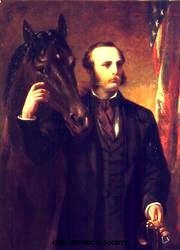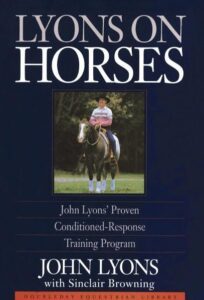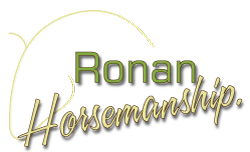Sending a horse is one of the most useful exercises we can perform from the ground. Indeed, every day we are confronted to situations where pointing a direction and feeling our horse respond at once and without any fear or hesitation would be of great convenience: walking through a gate, getting out of the stall, loading into the trailer, and so on. This exercise is designed to teach a horse to move on a feel, trusting our decision and judgment.
October, 2013
Exercises: Groundwork – Sending / video
Books: A New Illustrated Edition of J.S. Rarey’s Art of Taming Horses / quote
- “That [the horse] is so constituted by nature that he will not offer resistance to any demand made of him which he fully comprehends, if made in a way consistent with the laws of his nature.“
- “That he has no consciousness of his strength beyond his experience, and can be handled according to our will without force.“
- “That we can, in compliance with the laws of his nature, by which he examines all things new to him, take any object, however frightful, around, over, or on him, that does not inflict pain — without causing him to fear.“
These principles are clearly related to some concepts already mentioned in Natural Horsemanship: consistency, gentleness, desensitizing. It is quite interesting to read along the book some concepts and ideas that were contemporary to Xenophon more than 2,000 years ago.

Books: Lyons on Horses / quote

John Lyons understands the mechanics of NH (Natural Horsemanship) but has no feeling with horses, he is not able to communicate with horses _ which is the big difference with Tom Dorrance for instance. John Lyons’ understanding of horses is purely mechanic: horses are binary animals, unable to think or feel, unable to understand.
All his program is based on conditioning a horse to give one specific response to one specific cue:
“If we set up the condition often enough, and we get the same response consistently, then the condition becomes a cue for a specific, desired reaction or response.Lyons on Horses, John Lyons
How to mount a horse? / video
I might look presumptuous, to talk about mounting a horse, yet I saw some so-called riders having quite disturbing habits: pulling hard on the mouth, or actually breaking their horse’s back to the point that it was about to fall down… Hopefully, most people are more careful, yet a few tips might be helpful.
How to saddle a horse? / video
Unfortunately, most of the time, classic horsemanship leaves no place to such desensitizing, which eventually leads to problem horses: fidgety horses, animals moving when you come with the saddle, others biting when you cinch up, and so one. There are three steps in desensitizing a horse to the saddling process: the pad, the saddle, the cinch.
All the time you will spend to do the following work with your horse is an investment that will be rewarded a hundred times. Think about that: you will ride your horse for more than 15 years, so what about spending a couple of hours to get it used to such important pieces of equipment?

 ENGLISH
ENGLISH DEUTSCH
DEUTSCH ESPAÑOL
ESPAÑOL FRANÇAIS
FRANÇAIS